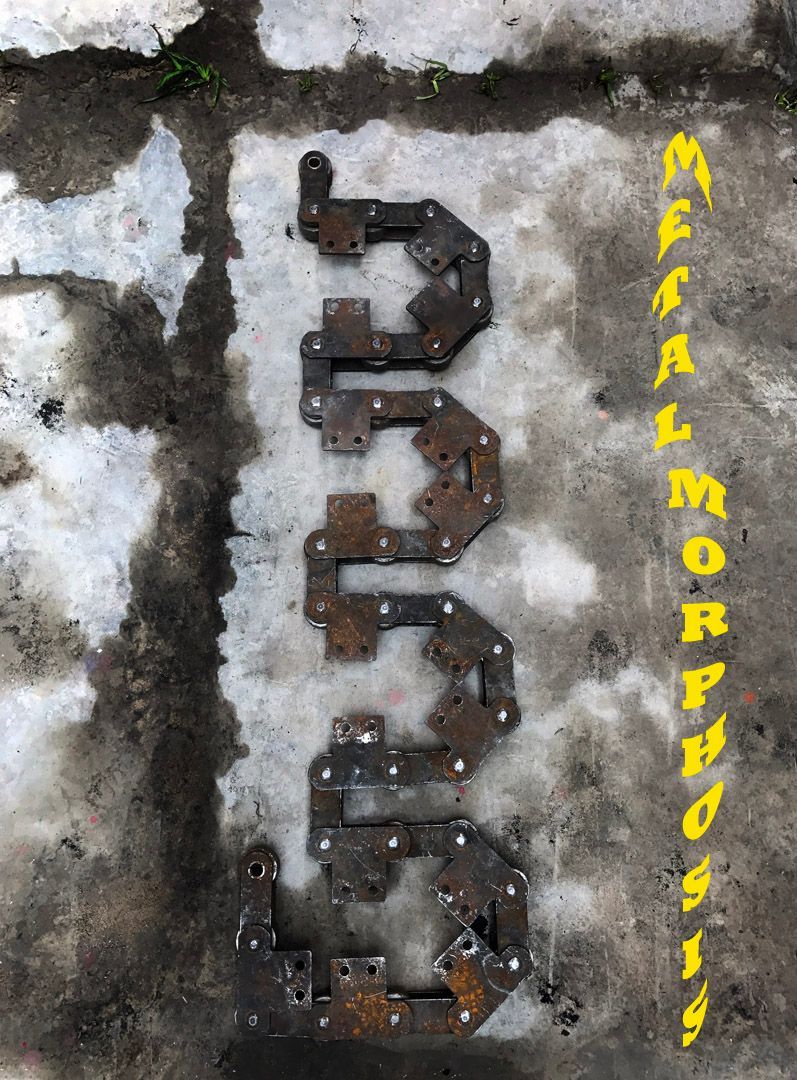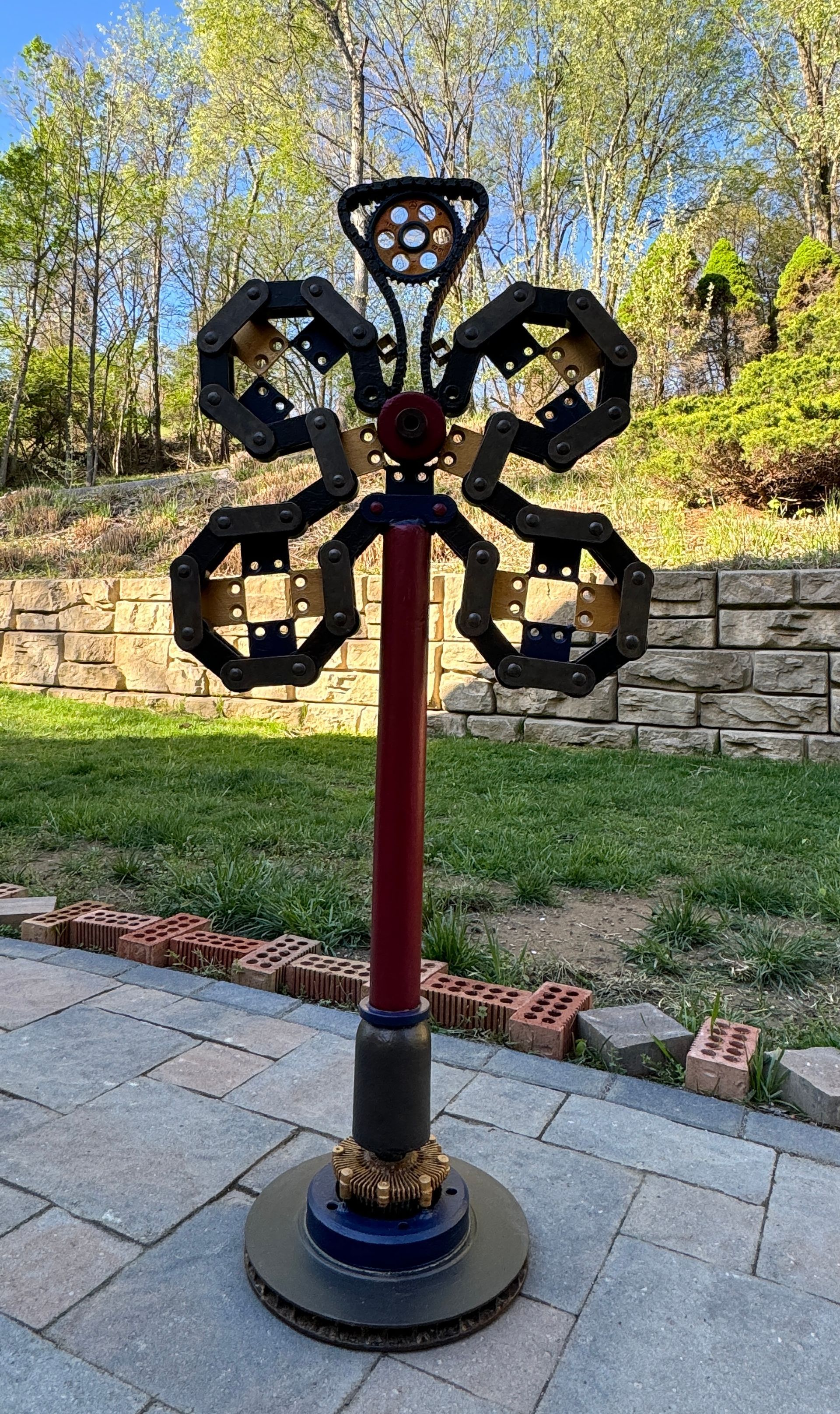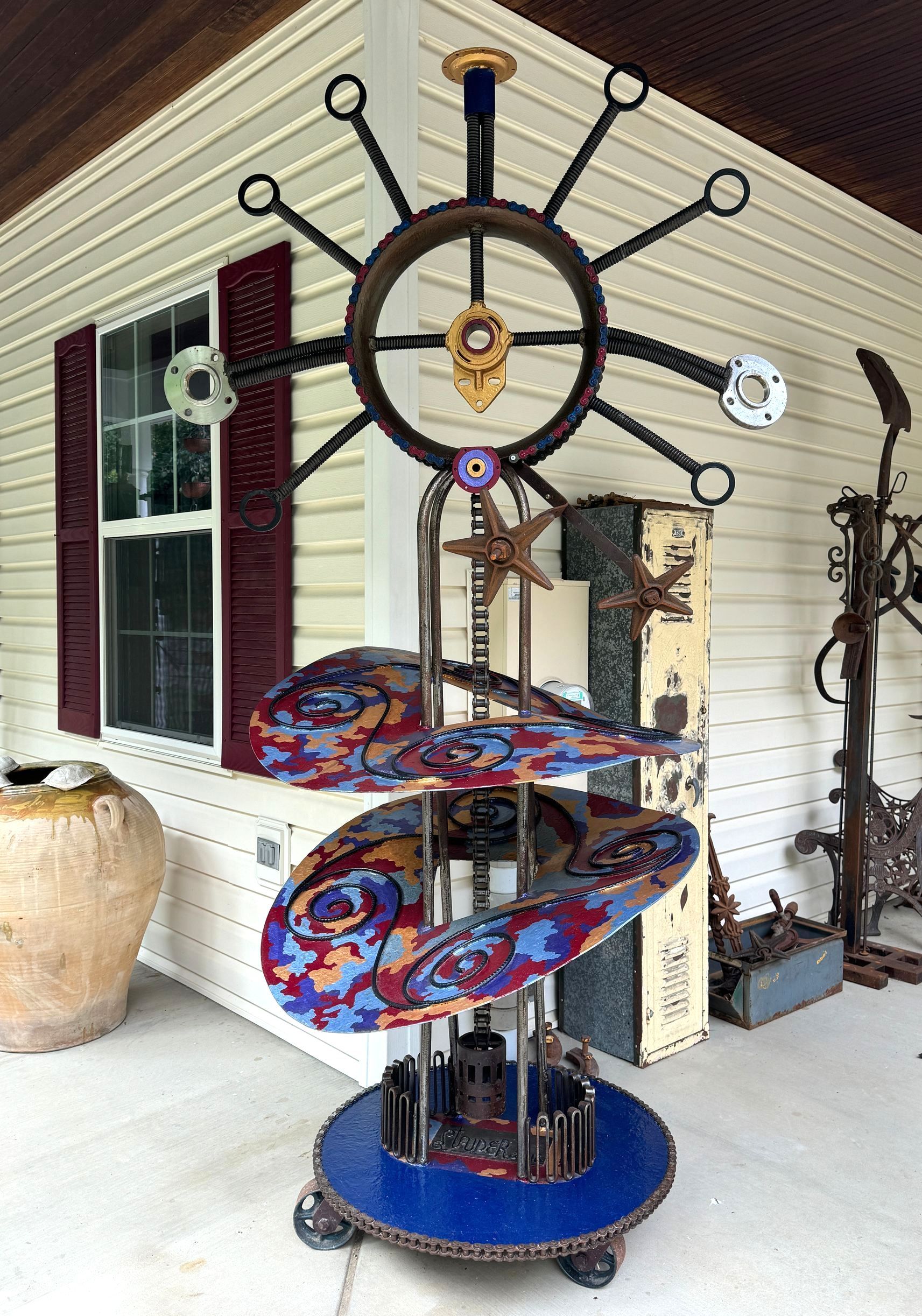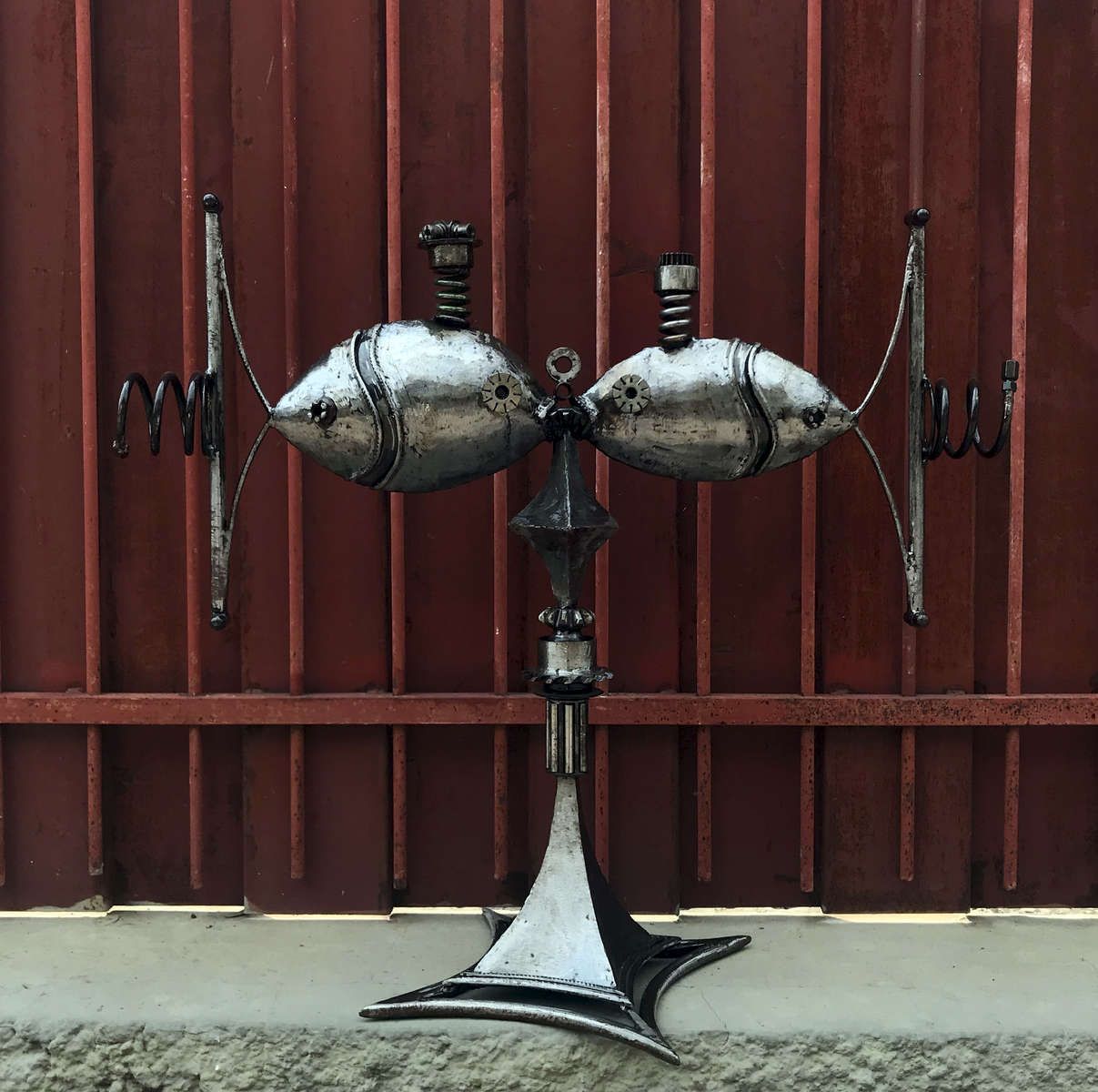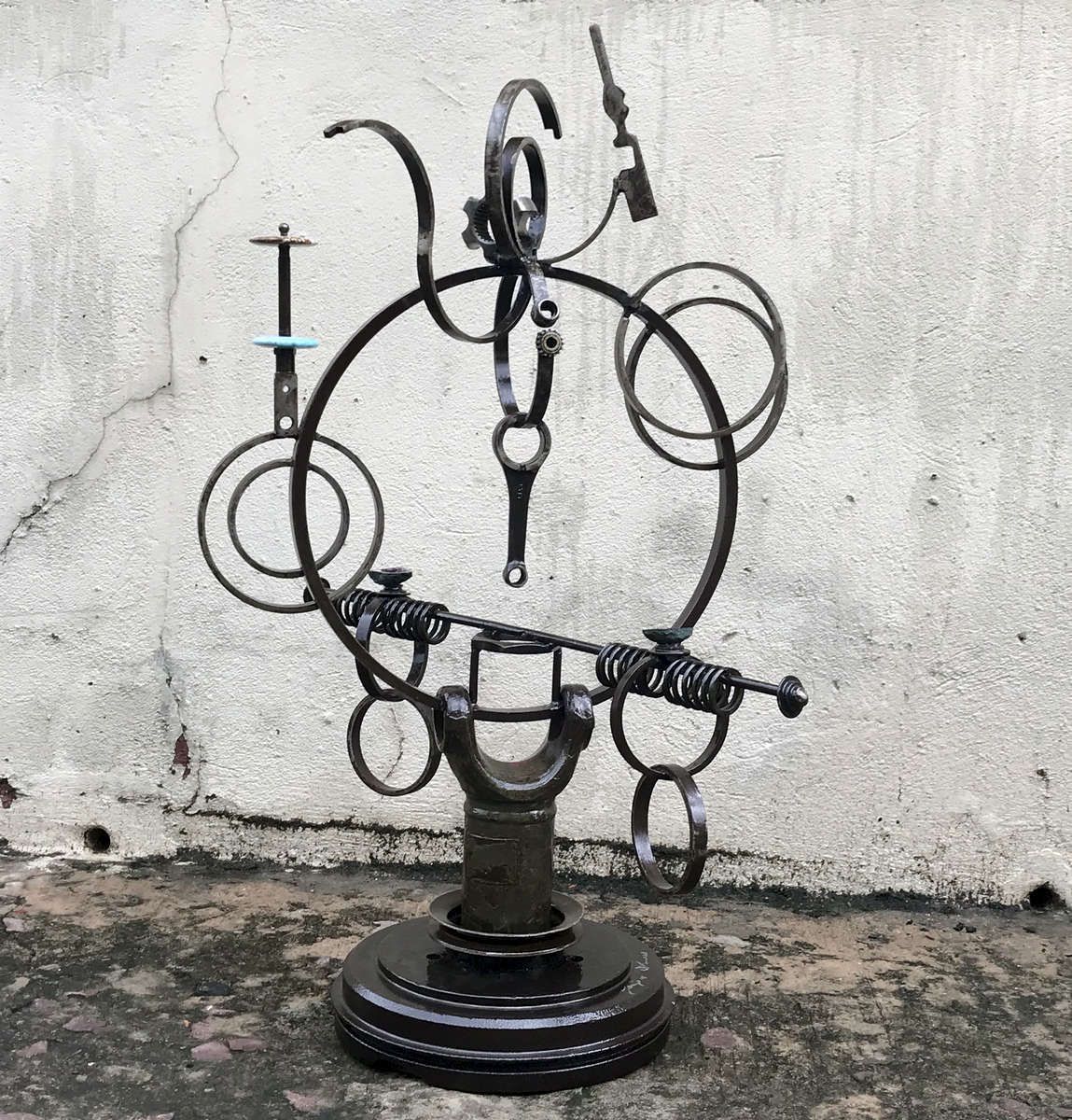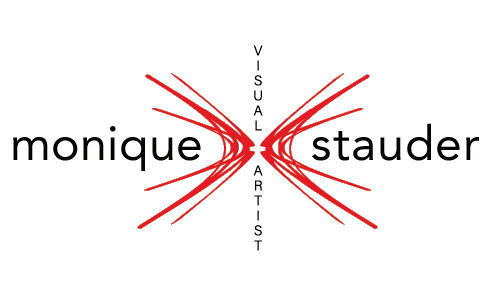METAL SCULPTURE
“There is that in me – I do not know what it is but I know it is in me. Wretch’d and sweaty – calm and cool then my body becomes, I sleep – I sleep long. I do not know it – it is without name – it is a word unsaid, it is not in any dictionary, utterance, symbol. Something it swings on more than the earth I swing on, To it the creation is the friend whose embracing awakes me. Perhaps I might tell more. Outlines! I plead for my brothers and sisters. Do you see O my brothers and sisters? It is not chaos or death – it is form, union, plan – it is eternal life – it is Happiness.” Walt Whitman
After my 2015 solo exhibit of Latitude Zero at Kinshasa’s Trust Merchant Bank’s exhibition hall, Le Monde des Flamboyants, the director’s wife, a kind-hearted patroness of Congolese arts, asked me, “What will consume you now that you can’t scurry around the world?” I didn’t have an answer. I simply knew I had to stay true to my poetic vision and continue creating. I had always felt an instinctual pull toward metal sculpture. “I need to learn how to weld,” I impulsively responded. She beamed, "I have the perfect contact for you."
Eddy Mbikulu, an accomplished Congolese artist with a heart of gold and a smile longer than the Congo River, became my mentor. I was amazed by his metalworking skills and dedication despite the challenging political turmoil and daily hardships in Congo. Under his guidance, I learned stick welding and discovered how every found object, from the mundane to the exquisite, had its own unique song. I learned to transform the outward inward and then the inward outward, listening to the tune of different objects and finding the harmony within to create structural melodies.
Click, swipe or use the keyboard arrows to navigate through the horizontal scroller.
We've enabled "hinted captions" in this demo, where you can see the title and the first line of the caption. Click "read more" (or the image itself) to open the full caption. You can select from other caption and UI options in the CMT.
Long overviews will scroll inline and can contain images or videos, as you can see below.
Walt Disney's Steamboat Willie (1928) is a black-and-white animated short film that is considered a landmark in animation history. The film stars Mickey Mouse in his first sound appearance and helped to usher in the era of synchronized sound cartoons. Steamboat Willie remains an iconic piece of popular culture today.
Hasui Kawase(May 18, 1883 – November 7, 1957) was a prominent Japanese painter of the late 19th and early 20th centuries, and one of the chief printmakers in the shin-hanga ("new prints") movement.
Kawase worked almost exclusively on landscape and townscape prints based on sketches he made in Tokyo and during travels around Japan. However, his prints are not merely meishō (famous places) prints that are typical of earlier ukiyo-e masters such as Hiroshige and Katsushika Hokusai (1760-1849). Kawase's prints feature locales that are tranquil and obscure in urbanizing Japan.
In 1923 there was a great earthquake in Japan that destroyed most of his artwork.
Alphonse Legros(8 May 1837 – 8 December 1911), painter, etcher and sculptor was born in Dijon.
As he had casually picked up the art of etching by watching a comrade in Paris working at a commercial engraving, so he began the making of medals after a walk in the British Museum, studying the masterpieces of Pisanello, and a visit to the Cabinet des Médailles in Paris. Legros, considered the traditional journey to Italy a very important part of artistic training, and in order that his students should have the benefit of such study he devoted a part of his salary to augment the income available for a travelling studentship. His later works, after he resigned his professorship in 1892, were more in the free and ardent manner of his early days—imaginative landscapes, castles in Spain, and farms in Burgundy, etchings like the series of "The Triumph of Death," and the sculptured fountains for the gardens of the Duke of Portland at Welbeck Abbey.
